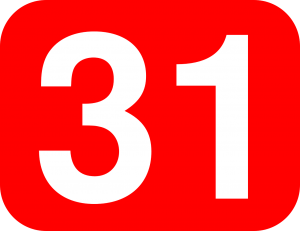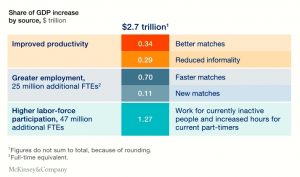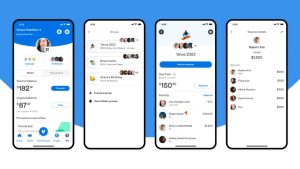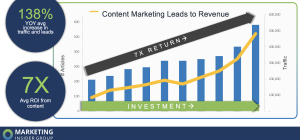SEO in 2016 may be a bit of a moving target, but there are some tried-and-true principles that, if followed, are guaranteed to significantly boost your organic traffic. While discussing every possible way to optimize your site would fill volumes, the 32 Stop Local SEO Success Roadmap condenses it into a neat and manageable format that should be easy to understand – even for the tech challenged among us. Some are common sense, some are ‘nice to have’, but there are a few key techniques that rise to the fore as absolute must-do’s.
You might be wondering what the big SEO deal is all about. Search Engine Optimization has been evolving since the internet became monetized. Recent changes have much to do with ensuring that your web searches yield relevant results, so that you can more easily find the product, service or information you are looking for. If you do business on the web, you depend on search engine traffic to drive customers to your site. A good SEO strategy can do just that, helping potential customers find you through search phrases they type into any search engine. This is called ‘organic reach’. As opposed to ‘paid reach’, which refers to traffic you acquire through digital advertising. Let’s examine some of the important local SEO stops along the roadmap, and talk about why you need to pay attention to them.
Source: 99MediaLab.

Mobile Responsive Website
![]() Responsive sites are simply websites that load properly on any device, desktop, mobile or tablet. This is important because people mostly rely on their mobile devices these days, with mobile users surpassing desktop users and still growing strong. Search engines rank mobile friendly sites higher than those that aren’t. Not least of all, if your site is not mobile-friendly, your potential customer will likely go elsewhere.
Responsive sites are simply websites that load properly on any device, desktop, mobile or tablet. This is important because people mostly rely on their mobile devices these days, with mobile users surpassing desktop users and still growing strong. Search engines rank mobile friendly sites higher than those that aren’t. Not least of all, if your site is not mobile-friendly, your potential customer will likely go elsewhere.
Research the Right Keywords
Keywords are still a very important aspect of SEO. There is a caveat here though, and this is based on many years of web shysters ‘stuffing’ keywords into their sites in order to attract traffic. These days, it isn’t enough to include a few keywords here and there – it is imperative that your site’s content is fresh, original and relevant to the product, brand or service you are selling. The goal is to carefully research the top search phrases for what you do, and insert these as naturally as possible into the body of your content. Your keywords should also be included in your URL’s and in your meta descriptions for best results. You can discover the keywords that best suit your brand or business by using Google AdWords Planner. Beware of keyword stuffing though – that is a quick and sure way to get you kicked off of first page search results. And if you’re not on page one, baby, you’re nowhere.
Unique, Original, High Quality Content
It goes without saying that your site should provide its visitors with useful information, but it goes a long way to boosting your SEO ranking as well. A blog, a forum, videos, live feeds of your social media activity, downloadable information like e-books, and creating a separate landing page for every product or service are all great ways to keep it fresh. Fresh content does double duty: it provides your site visitors with interesting content to discover, and every time you update, the site will ping search engines, encouraging them to crawl and index your site over and over again, which will drive your ranking up. Most site platforms, including WordPress, will automatically ping search engines whenever a page is updated. All you need to do is keep it coming.
As for high quality, this is something you should always strive for. It positions you as an authority on your subject, and will keep your site visitors coming back for more. As for ‘original’, plagiarizing another site’s content is the surest way to sink your SEO efforts right to the bottom. While some duplicate content gets a pass, such as common CTA phrases, descriptions for merchandise that might appear on several sites, or printer-friendly versions of content already on the site, if Google deems that the duplicate content is intended to manipulate rankings and deceive users, they will make the ‘appropriate’ adjustments, and possibly remove the site entirely from the index. Since information can tend to be repetitive, it is always best to use a plagiarism checker such as copyscape before you post in order to ensure that your content is 100% original.
Google Places and Other Local Directories
![]() Adding a Google Places listing is a great thing to do, as it gives you an enhanced search engine result that really stands out. In addition to your URL link, you can add photos, your address, hours of business and more. As Google is still the most popular search engine on the planet, you definitely want to claim your Google Places listing right away. Further advantages include responsive functionality, allowing users to contact you with one touch, activate Google maps or find your hours of operation on any device. Imagine – your customer performs a search, your Google Places listing pops up, they click on the ‘call’ button and are connected instantly. Already, they know that it’s nice doing business with you. Your customers can also endorse, rate and review you directly from your listing, and can also share your content directly to Google+.
Adding a Google Places listing is a great thing to do, as it gives you an enhanced search engine result that really stands out. In addition to your URL link, you can add photos, your address, hours of business and more. As Google is still the most popular search engine on the planet, you definitely want to claim your Google Places listing right away. Further advantages include responsive functionality, allowing users to contact you with one touch, activate Google maps or find your hours of operation on any device. Imagine – your customer performs a search, your Google Places listing pops up, they click on the ‘call’ button and are connected instantly. Already, they know that it’s nice doing business with you. Your customers can also endorse, rate and review you directly from your listing, and can also share your content directly to Google+.
Other local directories include YellowPages, Angie’s List and Foursquare, but there are many more. Yelp is also a good one to have, as your listing can be optimized and customized much like Google Places, helping it to stand out from other listings in your category. Appearing in as many directories as possible encourages customer engagement, boosts your organic traffic and shows that you are active in your business endeavors. Go one step further and respond to every single one of your customer’s reviews and ratings. By engaging your customers, you are letting them know that you care about what they think, which will encourage them to come back.
Know Your Audience
Now that you’ve got your spiffy new site up and running and your content strategy nailed, your web traffic should be building nicely. To take it one step further, you should know where your traffic is coming from. Information like who visits your website, where they are located and what they do while they’re on the site, where they arrived on the site from and how they interact with your site’s content – these are all things that Google Analytics can tell you. It’s a free service, and all you have to do is paste a bit of html code into your headers. It’s invisible to the user, but it collects and disseminates your traffic data into usable graph formats to help you further hone your web strategies, improve your site and deliver more of what your audience wants.
Digital & Social Articles on Business 2 Community(52)
Report Post







